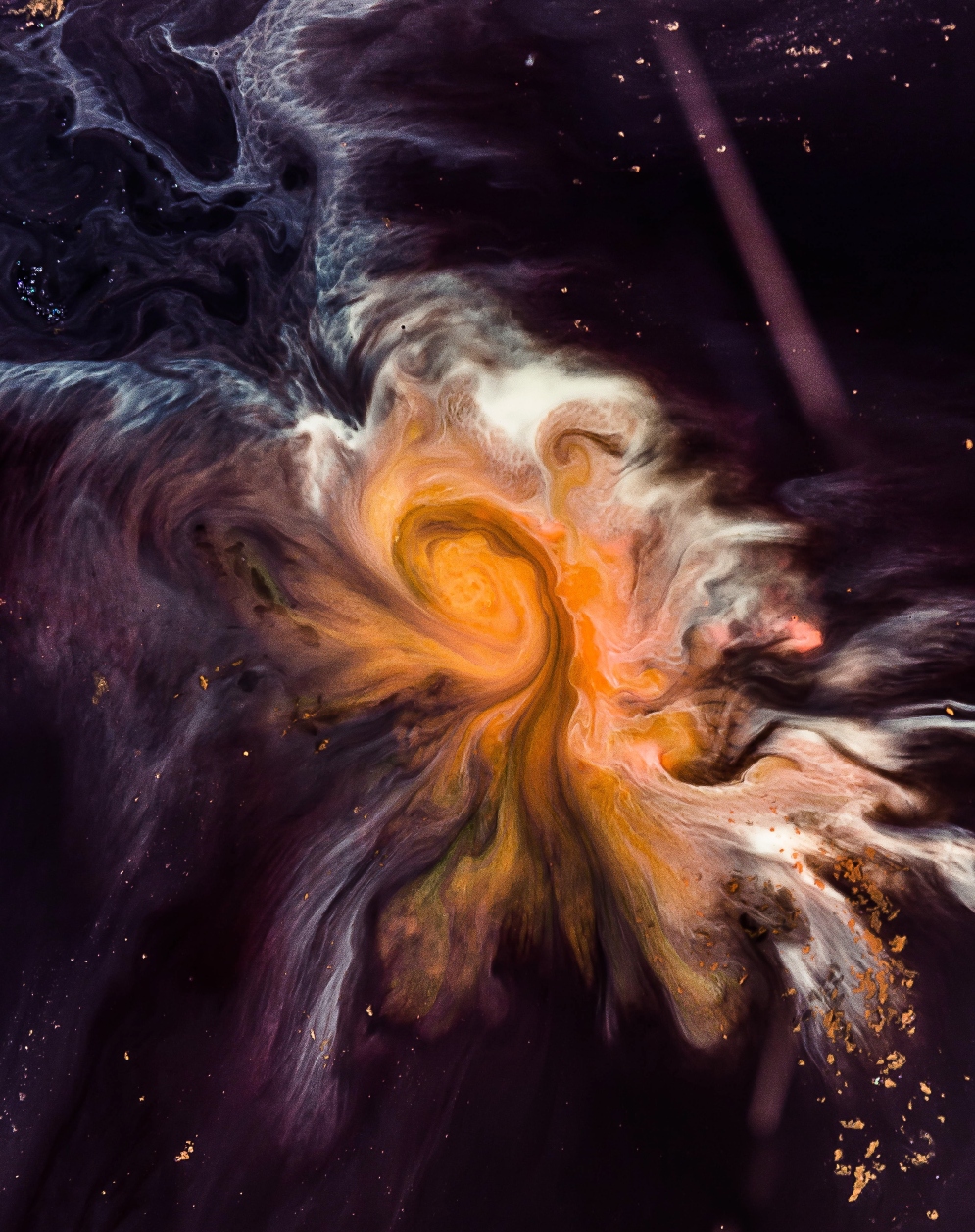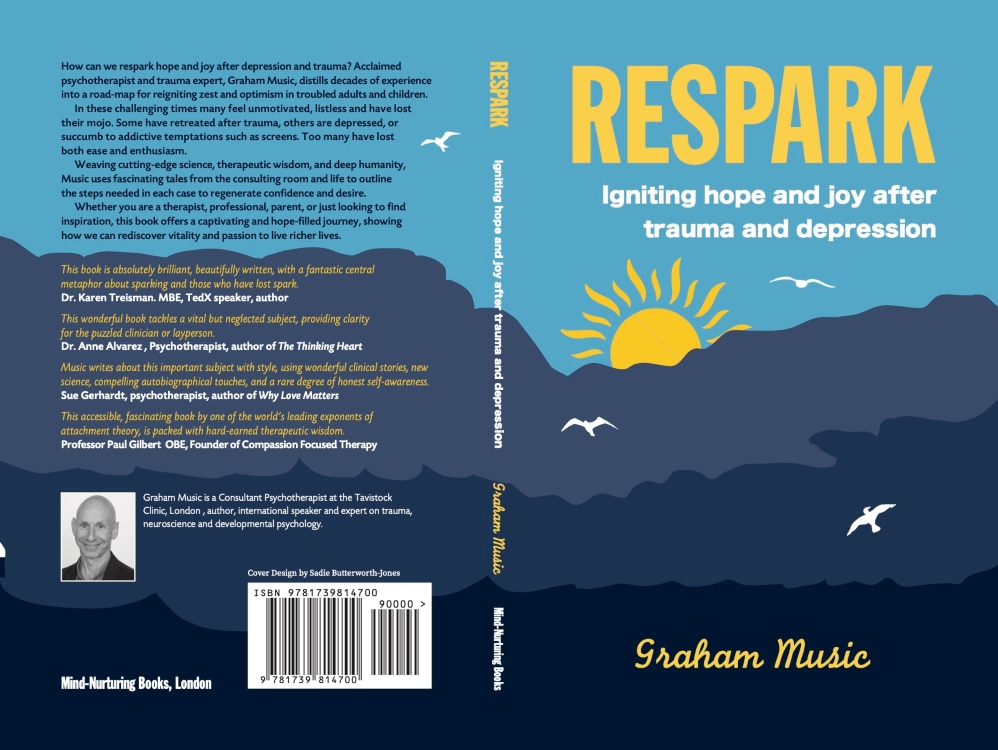Straight after birth a new baby, when placed on its mother’s abdomen, can slowly crawl unaided towards its mother’s breast, often pausing enroute to look into her eyes, and on arriving at the breast can latch on and suck, albeit often needing help. In these first moments of life we see desire, a psychobiological lifeforce, a propelling of oneself towards a wanted object. Life would be poorer without such desire, often called the appetitive or seeking system, which drives us towards what we seek, whether food, sex, or other good experiences. Some people, who I call unsparked, can have a deficit of this lifeforce, this desire, this hope for good things, they have turned away from their internal lifegiver, withdrawing into an insulated anti-hope anti-life stance.
The first object of desire is generally one’s caregiver, normally the mother. What stimulates most desire and reward early on is the desire for relationship. Indeed, this should be the primary driver for most people throughout life but is less so in many unsparked people who have turned inwards, resorting to self-soothing or other forms of shutdown, turning away from connection.

Addictions are one way to numb, close down, avoid pain and cope with what otherwise feels overwhelming. I have for many years worked with children and adults struggling with different forms of addiction, from social media, gaming, alcohol, drugs, compulsive shopping, food, and of course, pornography. These are particularly powerful addictions, but we all have addictive tendencies, whether towards chocolate, cake, wine, smart phones or shopping, for example.
My own addictions include screens, the ‘buy-it-now’ button, and also things that look healthy, like exercise. We can all turn to our objects of addiction when confronted by something difficult, a stressor, bad news, anxiety, rejections, work pressure for example. When younger my addictions, embarrassingly, included cigarettes that I turned to when facing something uncomfortable, such as an awkward social situation, often lighting up before I knew I was doing it.
We have known for decades that addictions piggyback on systems in the brain central to pleasure or reward seeking, systems which have served us well in our evolutionary past. For example, they drive us towards food and sex, without which our species would not have reproduced and passed on our genes, and lives would be far less rewarding.
Of course, throughout evolutionary history the systems involved in seeking rewards were most active when there was a felt need. The lion does not hunt after a huge feed, and mammals, including humans, rarely seek out sex straight after a satisfying sexual encounter. If we are reasonably secure, at ease and emotionally alive, we might not be constantly on the lookout for new rewards but still have the confidence and flexibility to respond when a potential reward shows up. Hunter-gathers might, for example, drop everything if they realise that hunting a nutrient rich animal or snaffling honey was a possibility. They might also play a very long game and track an animal for hours or even days. This requires effort, motivation, and an expectation of reward at the end. In my twenties I bought and sold antiques, and I often wondered if it was like being on a hunt, although possibly more addictive, heart racing with a hyperalert buzziness as I approached a market in anticipation of that big find that sadly rarely materialised.
Any young person or adult can defend against an inner lack of spark via addictive processes. A lack of spark might be a result of neglect, learned helplessness, depression, or trauma, or immediate life circumstances, but always there is something anti-life in this inner flatness and lack of motivation. This leaves a kind of psychic hole, a deadness, and many addictions, as Gabor Mate and others suggest, are attempts to fill such holes, but in ways that lead our reward systems to go somewhat off-kilter. We can try to manage addictions behaviourally, such as by cold turkey or removing the object of addiction, but a more effective approach starts with developing a feeling of safeness, ease, freedom from danger, and then a reboot to rekindle desire, hope and more healthy reward seeking, especially from human relationships.
Addictions, flatness and anhedonia
Neglect particularly can kill ofs spark and aliveness. Many adoptees from depriving orphanages. can seem flat, lacking energy, and show traits such as poor ability to recognise emotions, flattened affect, less capacity to give and receive loving care, a lowered predisposition for ordinary pleasure and a turning away from social relationships. Indeed, whole areas of their brains have been found to be less online, something that partially improved for luckier children placed early enough into caring families.
Many brain areas involved in emotional life are adversely affected by such early experiences, including the circuitry involved in reward seeking. Early adversity, and particularly neglect, blunts connections between areas of the brain such as the prefrontal cortex and our mesolimbic dopaminergic reward circuitry, connections which are stronger when things have gone well early in life. Early stress even predicts less development of the dopaminergic neurons central to reward seeking. This makes sense. Life is more rewarding and spark-inducing if we have had, and expect to have, good experiences, and we develop the appropriate priors, in our minds but also our brains and bodies. Very neglected children often struggle to read social cues, and also their social reward circuits are less ready to seek out good experiences.

Generally, when things go well and I have a good experience, I might think, I really liked that experience and so I will remember it and next time do my darndest to make it happen again. With neglect and abuse children have learnt to expect things like abuse or deadness rather than the good experiences other children want to repeat and seek out. The orphan alone in a cot who sometimes finds a bottle in their mouth, already has a very different motivational system to the already sparking new-born crawling towards the breast or smiling at an adoring parent. The biggest motivator and prize for most infants and children is loving, mutually enjoyable relationships. Neglected children tragically lack these, and as a result they close down, to hope, to potential relationships, and this can manifest in lifeless bodily expressions and less activity in the brain’s reward pathways.
Anhedonia describes an inability to feel pleasure and seek rewards, symptoms that are also seen in what is called Reward Deficiency Syndrome, and are common in addictions. In anhedonia we see less anticipatory seeking out of good things with hope or excitement. For those struggling with anhedonia, something can still be experienced as pleasurable but they do not seek out or anticipate its rewards.
The latest Instagram or Tik-Tok post, or indeed drugs and other objects of addiction, can give a sense of excitement, hauling people out of desparked states. We often see this in neglect sufferers. The object of reward, such as a drug or pornography, provides a spike, colloquially sometimes described as a dopamine hit, which can be exciting but short-lived, not providing genuine satisfaction, and soon after the buzz, bad feelings and the renewed urge can redouble, forming a vicious cycle of seeking.

Many of my clients have fitted such a pattern, with few interests, no real friends, and my people often feel flat around them. Many struggling with anhedonia revert in challenging moments to activities such as addictive substances, excessive food consumption or compulsive screen use. These provide temporary respite from deadness, and easy rewards with little effort, but ultimately do not shift the anhedonia.
We often see a terrible vicious circle. The use of gaming, pornography or drugs can temporarily spark reward circuitry. However often the addiction of choice becomes less rewarding, and then even more of it is needed to get that buzz, whether stronger drugs, the next level of a game or more hard-edged pornography. Sadly, many when trying to come off their addiction experience high levels of anhedonia. The object of addiction no longer provides satisfaction, but the seeking becomes addictive, in part because in seeking there is at least a hint of aliveness. I have seen this particularly with social media use, and also sexualised images such as pornography which trigger a false buzz stimulating and continuously draw people back for more. Generally I find that the addiction is the symptom not the problem, and igniting other systems rebalances and allows a reset leading to a resparking of healthy desire.

Which sparks to ignite in addictive deadened states?
Our brains learn to expect pleasure and seek it out. If I have a pleasing or exciting experience with someone, my reward circuits will probably fire up when I see that same person again. This might be a child’s loving parent or a desired sexual partner or a tree with honey in it. An area called the VTA (vegetal tegmental area) is where much of the neurotransmitter dopamine is produced. The VTA connects to other brain areas. So, if something is rewarding, such as climbing a tree and finding honey, this system suggests, ‘hey that felt great, let’s make sure we do it again, I must remember what happened and repeat it’. The dopaminergic system reaches all the relevant areas of brain circuitry, such as the amygdala, involved in the emotionality of an experience (‘wow, that feels amazing), the hippocampus (‘yes I must remember this place’) the nucleus accumbens, helping to navigate to the potential reward, and the prefrontal cortex helping to work out how to do it. After I get the thing I desire, such as sweet honey, or a loving sexual encounter, the feeling of satisfaction involves other neurotransmitters, serotonin, involved in feeling good, or oxytocin, so involved in loving feelings. This describes a rich combination of positive experiences that people might not get during a barren early life when priors were forming.
Many who have suffered adverse childhood experiences such as trauma are more drawn to such addictive temptations, have less propensity for good experiences, are less likely to feel content or satisfied and more likely to experience anhedonia. Those who grow up not experiencing much love and pleasure can compensate by seeking rewards which do not deliver real satisfaction and can lead to anhedonia. Indeed tech and gaming companies are expert at keeping us online and stimulating desires for rewards, and in fact getting ‘likes’ and new ‘friends’ on Facebook over-stimulates dopaminergic areas of the brain such as the nucleus accumbens, but does not provide real rewards.
For many young people I have worked with, their addiction overrode any inkling that what they are doing was bad for them. In decades old experiments, electrodes were connected to a rat’s reward circuitry, including the aforementioned nucleus accumbens. The rats could stimulate that area by pulling a lever, and they did so almost constantly, over 2000 times per hour, ignoring all other needs, whether for hunger, thirst, a nearby female on heat or for females, their infants’ needs. This of course is the kind of thing we see in human heroin and other addictions.

When in the grip of addictions, we struggle to assess whether something is good for us or not. Your average animal, whether a rat or human, when given food it likes alongside something that makes it sick, will reject such double-edged offers. This is not so in addicted rats or humans, who will go for the reward whatever. Even very hungry rats will not cross a path which gives a painful shock in order to get the food they want, but addicted rats will endure surprising amounts of pain to get the drug. We see something similar in drug users, who for example, will steal or betray loved ones to get their fix.
Our evolutionary history has not prepared us for contemporary addictions and temptations, such as screen-based games or new drugs. If I am hunting for food (and possibly antiques!) and I know my prey or reward is near, I will have a dopamine spike in physiological systems which enhance effort. Something healthy is being ‘sparked’ here and will keep me on-track to reach my goal, which is why the neuroscientist Andrew Huberman has called the dopaminergic system a kind of courage circuitry . This is very different to how novel contemporary drugs or even social media stimulate an easy lazy grabbing of whatever reward is on-hand.
Once I get that reward, the seeking system should lower in intensity and other areas become dominant, such as for satisfaction and feeling good. In addictions these other sources of satisfaction are often missing, such as the serotonin high-status buzz from doing well on a hunt, or the oxytocin rush of loving feelings from a safe loving family life or intimate sex. In addictions only parts of the system are firing, or to extend the electrical metaphor, all the current is going to one place only, short-circuiting other needed experiences. In such situations our job is to reset by developing safeness, ease and calm, and then reboot to enable a healthier and not a defensive sparking.
Note: This was a specially adapted excerpt from Graham Music 's forthcoming new book; Respark : Igniting Hope and Joy after Trauma and Depression which will be available to buy soon.

The Sunflower Network provides a platform for professional community members to publish articles on this website. The views expressed in this article are those of the article author.

